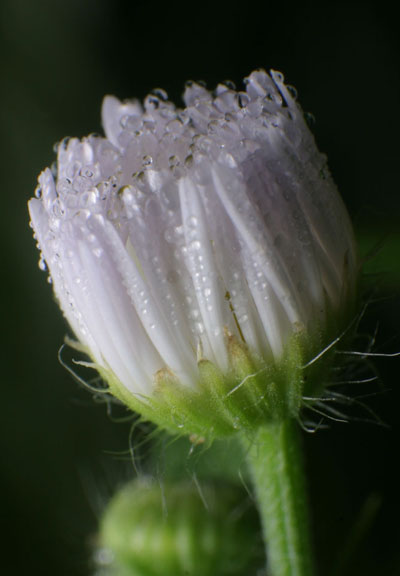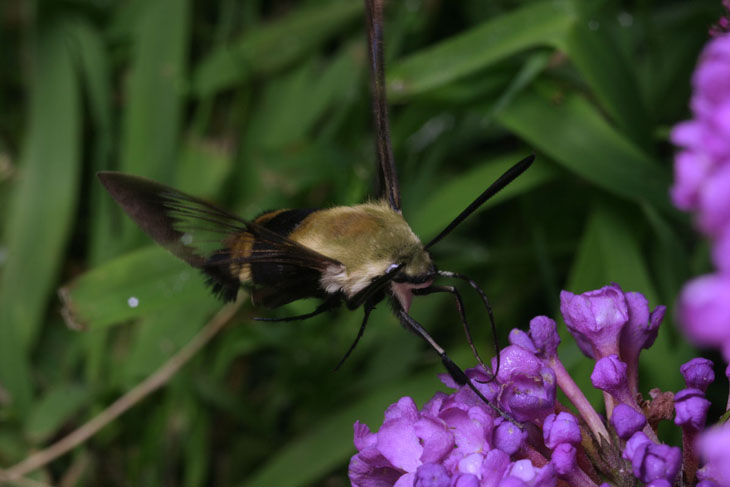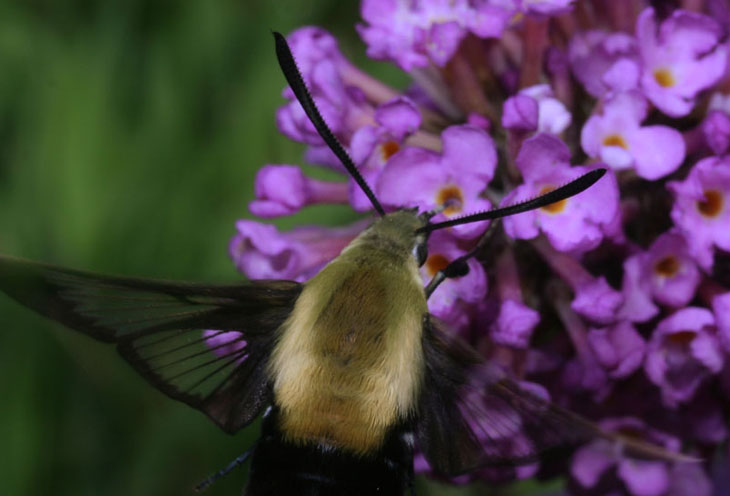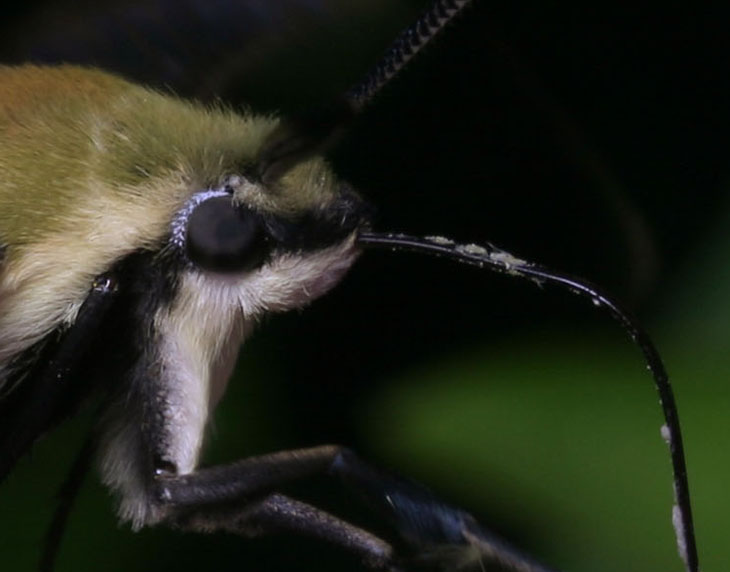 I’m starting with an image largely unrelated to the post topic, simply because I like it better. I did get a few dewy morning photos of the plant I’m about to mention, but this one’s much stronger, and it does illustrate the conditions nicely. Just don’t call it art.
I’m starting with an image largely unrelated to the post topic, simply because I like it better. I did get a few dewy morning photos of the plant I’m about to mention, but this one’s much stronger, and it does illustrate the conditions nicely. Just don’t call it art.
In the attempt to get nice natural settings for subjects like hummingbirds (who are raiding the feeders madly right now,) I’ve tried cultivating several different kinds of flowers to attract them. Most simply didn’t take well. The salvia blooms have been too small. And the birds aren’t showing any interest in the butterfly bush (probably Buddleia davidii), though it’s now gaining the attention of a few other species, so it’s starting to fulfill its purpose. Plus it’s National Pollinator Week, which had escaped my attention until this post was in final draft despite the fact that it fits nicely…
The other morning the dew was off the charts, plus it had gotten surprisingly chilly overnight. The bumblebees (best guess is Bombus bimaculatus) had been plundering the butterfly bush routinely, and a few had decided to camp out overnight on the blossoms – the result was several soaking wet, extremely sluggish bees in the morning. This allowed me to go in for the closeups without frightening them off, though it did engender some leg-waving warning behavior. As I was getting sharp focus, I could see something moving off to the side, too small to make out clearly, which turned out to be an unidentified insect who’d warmed up a lot faster than my primary subject, and was scampering about without regard for personal space or proper decorum.

Below is a tighter image for the detail, letting you determine that this is a female. What? You mean you didn’t know that twelve antenna segments denotes a female, and thirteen denotes male? That’s okay, because neither did I before I started this post – I end up doing no small amount of poking around just to try and give proper scientific names, which can get very involved with arthropods. Anyway, females only have twelve because god used one to make the males, or so the story goes. Makes perfect sense…

It’s a shame that this resolution doesn’t let you see the detail within the compound eyes, because I did capture it, but for the blog image size it was either good framing or closeup detail – I chose framing. This time.
A little later in the day, I noticed that a bumblebee moth (Hemaris diffinis) was visiting the bush, and I hustled inside to get the camera, lucking out considerably in that the moth was still busy when I returned. Usually I spot this species, and its kin the hummingbird hawk moth, fleetingly, and have less than a minute to get anything decent in the way of images. This time around the moth seemed perfectly willing to ignore me, and I was even able to chose my shooting angle occasionally.

Unlike bees and most lepidoptera, hawk moths don’t land to gather nectar but remain hovering, and of course this isn’t perfectly still either, so tight focus is a challenge – I should not have the number of useful images that I do. Even less so because I was on the phone the entire time (hands-free headsets are wonderful things) – my friends are used to this, to be honest, and even offer advice. One suggestion that I received, which seems to make perfect sense, actually doesn’t work: you can’t select a spot and wait for a bee or moth to wander into it, because there’s nothing systematic about the way they gather nectar. I’ve tried this a lot, and have been successful only a tiny percentage of the time, and certainly not with the Hemaris.

This image seems like a somewhat boring angle and framing, until you realize that the proboscis can be seen going straight down into the bloom – I’m pleased. A curious thing that I noticed during the shoot was that the bumblebees were smaller than I often see them, only about 25mm long, but the hawk moth was the same size, significantly smaller than I’ve ever seen one. I have no idea if this is just by chance or if there’s some natural mechanism that helps them blend in as closely as possible, so they appear most often among bee species of similar size.

I might have to look up the properties of the Buddleia flower genus, because all of the insects that were visiting the blooms were the most intent I’ve seen, disturbingly so. I was able to pet a bumblebee (showing off for The Girlfriend) without producing even the slightest reaction, during the heat of the day when torpor was no excuse, and my friend the hawk moth was so close it actually passed within 3cm of my leg, while I was sitting on the ground and looming over it with the camera and softbox. That nectar seems to be heady stuff.
I’ll close with a detail crop of the previous image, to show just how lucky I got this time around. While I might have liked a better contrasting background or to have caught the wings in an ideal position, I can’t knock the focus on the eyes and proboscis. If there’s anyone out there that mutters disparagingly over my use of captive subjects and studio shooting, this image, taken of a hovering, hyperactive insect, is my “Bite me” response ;-)




















































